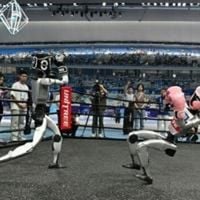The 2025 World Humanoid Robot Games kicked off in Beijing this past Thursday, transforming the National Speed Skating Oval into a futuristic battleground where over 500 robots from 280 teams and 16 countries vied for supremacy in 26 events. If you thought this was just another tech expo, think again—these Games have all the drama, spectacle, and unpredictability of a true sporting carnival, complete with high-flying hip-hop dance routines, metallic clashes in the combat ring, and even the odd robot bellhop struggling with basic chores.
From the opening ceremony, it was clear that this wasn’t your average robotics competition. According to NHK, robots developed by both companies and students paraded their talents, with one Beijing-made robot declaring on behalf of all participants that they would “compete for the future, imitating the wisdom and will of humanity and applying the power of science and technology.” The crowd was treated to an eclectic show: humanoid robots danced hip-hop, performed martial arts, and jammed on keyboards, guitars, and drums. As France24 described, “Humanoid robots will compete in sports such as football, running and boxing. The event comes as China steps up efforts to develop humanoid robots based on artificial intelligence.”
But for all the glitz, the Games are also a proving ground for the serious business of robotics innovation. As Xinhua reports, the competition is a showcase and a knowledge exchange, where companies and research institutions push the limits of design and performance. On the football pitch, AI-powered robots played three-a-side and five-a-side matches, using high-speed visual sensors to track the ball’s trajectory. They weren’t always graceful—tripping and tumbling were common—but their mechanical agility was on full display as they sprang back up, ready for more action.
The soccer matches, as Li Zi’ao, a graduate student at North China Electric Power University, explained to Xinhua, are a real test of communication and coordination. “The main challenges in robot soccer right now are communication and coordination. Most robots still play individually.” Li’s team is working on a captain-election algorithm so the robot with the best vantage point can direct play, reducing the chaos on the field. It’s a clever solution, but as the matches showed, the robots still have a way to go before they rival the world’s best footballers.
Elsewhere, the Games tested the limits of human-robot cooperation. In the 400-meter and 1,500-meter races, technicians guided their robots with devices similar to gaming controllers, one hand managing speed, the other steering direction. Xue Qingheng, deputy general manager of Inter City Technology Co., Ltd., told Xinhua his company’s robot completed the 1,500-meter race in 14 minutes, a marked improvement over its performance at a humanoid robot half-marathon in April. “After four months of iterations, our robot now runs stably without falls or glitches. There’s room to improve speed and strength, but this marks real advancement.”
While some robots ran with impressive stability, others struggled with overheating. Chen Dong of MagicLab Robotics Technology Co., Ltd., called the competition the “ultimate stress test” for product design. “If our robots can handle these extreme conditions, they can handle anything in daily operations.” As Chen noted, “Many overheat with prolonged operation. Top models use improved materials, but we still need better thermal solutions.”
The combat arena was a crowd favorite, with metallic clangs echoing as operators directed their machines through free combat events. Deng Huasheng from Unitree Robotics highlighted the delicate balance between hardware durability and software algorithms: “If the structure can’t withstand collisions, it will fail. And if balance algorithms falter, a light push can knock a robot down.”
But the Games weren’t just about sports. Real-world tasks—like moving boxes, delivering luggage, and cleaning rooms—were on the schedule, too. As the Wall Street Journal observed, “Some were remarkably fast and agile, but most were clumsy and inconsistent.” In one memorable moment, a robot took more than 17 minutes to throw away nine pieces of trash in a mock hotel room. Another spent five minutes grabbing three boxes of medicine in a pharmacy simulation, while a third took two minutes to place two containers on a shelf in a factory scenario. “Everything that is easy for humans is a challenge for robots,” said Diana Kleingarn, a Ph.D. student from Germany who helped train soccer-playing robots.
Still, there were some standout performances. A wheeled robot from startup UniX AI finished the hotel room-cleaning task in just 8 minutes and 21 seconds while operating autonomously, winning the gold medal for that event. Company founder Fred Yang credited improvements in manipulation and perception, thanks to training robots with large AI models. “That has allowed robots to operate in generic scenarios,” Yang explained. UniX AI has already deployed several hundred robots, many at hotels, with prices starting around $12,000.
Meanwhile, in the 1,500-meter race, a team using Unitree’s H1 robot clinched the gold with a time of 6 minutes, 34.4 seconds—about three minutes slower than the human world record. “For our next competition, we’ll definitely choose autonomous mode,” said Unitree founder Wang Xingxing in an interview published by the event organizers. During the soccer matches, robots stomped rhythmically, sometimes crashing into each other or falling over. Human caretakers dashed onto the field to rescue fallen machines, adding a touch of slapstick to the spectacle.
Not all the action was on the field or in the ring. The Games also featured competitions tailored to machine capabilities, such as box transportation and medicine sorting. Logistics robots from Jianghuai Advanced Technology Center used wheeled chassis and telescopic arms to handle materials, with researcher Wang Xu noting that future designs will focus on refining arm structure, chassis stability, and thermal control to boost efficiency “beyond human capabilities.”
Despite the sometimes comical mishaps, the event underscored China’s ambitions. The government is aiming to bring the country’s humanoid robotics to a world-class level by 2027, hoping robots can eventually replace humans in boring or dangerous jobs. As Xue Qingheng put it, “Humanoid robots today resemble the internet in the 1980s—poorly understood yet transformative. But I believe that in the near future, robots could become as ubiquitous as smartphones.”
And the innovations keep coming. Chinese scientists recently developed the world’s first full-process intelligent breeding robot, adding to the sense that the Games are just the beginning of a much larger story. “I hope events like this propel the whole sector toward better development,” said Unitree CEO Wang Xingxing.
All told, the 2025 World Humanoid Robot Games in Beijing have been a spectacle of both promise and growing pains. As the event draws to a close, it’s clear that while robots may not yet rule the world—or even the hotel housekeeping staff—they’re learning fast, one stumble and one spectacular goal at a time.




